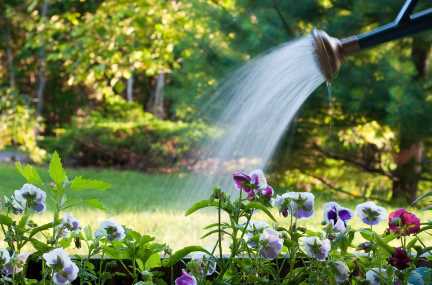In order to prevent your plants from drooping in the landscape beds during the heat of the summer, it is important that they receive adequate water supplements when rainfall is not prolific. It is also significant to note that plants need to dry out thoroughly in between watering efforts in order to develop a strong root system.
When watering your landscape plants, even in the heat of the summer, it is key to water thoroughly but with less frequency. Two to three watering per week are typically adequate, however, if you notice that the soil is significantly dry or the plants are “flagging” and look like they are wilting, a thorough, deep watering should not be dismissed.
Choosing what time of day to water is also imperative, as plants are more successful when watered early in the morning or later in the day. Watering early morning or on cooled soil leads to less evaporation allowing the plant to use more of the water applied for the following day’s heat.
Watering at the base of the plant near the soil level and root systems can help the water to easier be translocated throughout the plant. This also prevents disease, as wet leaves become diseased leaves, whether the moisture sits overnight on the leaves and forms a leaf-mold or during the day, which could cause leaf burn. Regardless, keeping the water flow at the base of the plant is ideal.
Keep checking plants, specifically trees and shrubs, in the fall. Trees and shrubs, particularly evergreens and recently planted trees, need abundant water in their root systems as they go into winter, so continue to water as long as you can.


